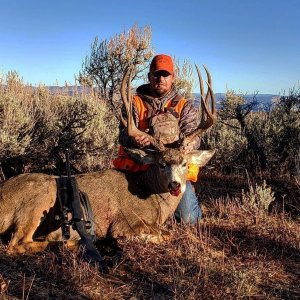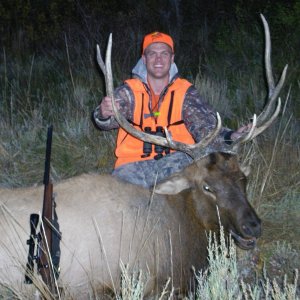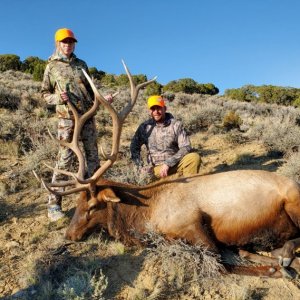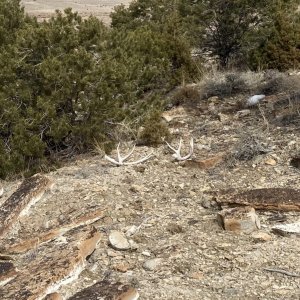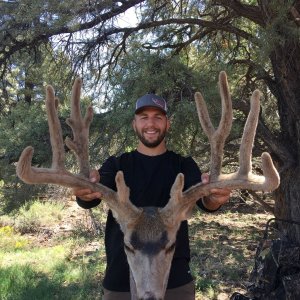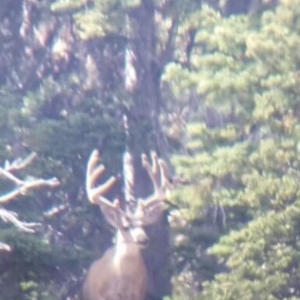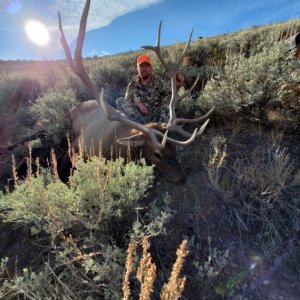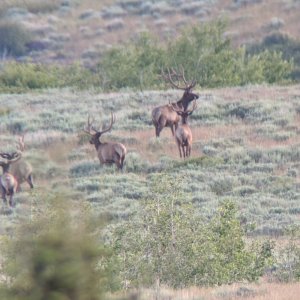You are using an out of date browser. It may not display this or other websites correctly.
You should upgrade or use an alternative browser.
You should upgrade or use an alternative browser.
Tooth data age results elk 2022
- Thread starter huntin50
- Start date
elkantlers
Long Time Member
- Messages
- 3,895
You should be able to look it up on your harvest survey page. My Sheep tooth data from 2022 is on there..
twopointdn
Active Member
- Messages
- 505
My antelope age is posted for my 2022 hunt. Early October hunt.
twopointdn
Active Member
- Messages
- 505
Utah muzzleloader antelope public land. I set up on him bedded at 80 yards. After about 20 minutes of waiting my dad got impatient and started to waving his hat in the distance and the buck stood up. I was ready and pulled the trigger and put him back down in his last bed. Fun hunt with my dad and this antelope completed my weapon cycle on antelope. Rifle, muzzleloader, and archery buck antelope done. Completed the weapon cycle on deer, elk, and antelope now and I’m calling it good from here on and I will just be happy to have a tag in my pocket no matter the weapon type. My antelope was aged at 7 years old. Fun stuff.

wstrntines
Very Active Member
- Messages
- 1,932
Just checked my bulls age they are saying
7 yrs old.


7 yrs old.
Silentstalker
Long Time Member
- Messages
- 3,234
Here is my 2022 bull. DWR aged him at 4 years old. Super fun hunt.


elkantlers
Long Time Member
- Messages
- 3,895
Unless you can prove that the lab that is aging the tooth is being intentionally deceptive, I would believe the results.I have a hard time believing some of the tooth data that people get sent back. It doesn't seem to fit sometimes. That data is used to judge age objectives that the DWR has set. I'd be curious to see results from the DWR as well as an independent company.
I've had several animals aged and I think they are all accurate.
elkhunterUT
Long Time Member
- Messages
- 3,085
Fit based on what? Your observation of antler/horn size? How are you determining age?I have a hard time believing some of the tooth data that people get sent back. It doesn't seem to fit sometimes. That data is used to judge age objectives that the DWR has set. I'd be curious to see results from the DWR as well as an independent company.
Is this another conspiracy theory to add to the list with the DWR?
All of my aged animals seem accurate.
wstrntines
Very Active Member
- Messages
- 1,932
There is independent labs that do this Robbie Denning talks about it in his podcast if anyone is interested in 3rd party results.
elkhunterUT
Long Time Member
- Messages
- 3,085
Do people really think the DWR does the tooth aging themselves? If so, I can see why guys would add this to their list as another conspiracy theory that the DWR is using incorrect data to drive their own hidden agendas. That is a bunch of garbage.
I think folks should educate themselves - The UDWR already uses an independent 3rd party to do their tooth aging. They do not do it inhouse to flex the data to their advantage . They use Matson's Laboratory in Montana which is a reputable lab and one of the few in the U.S. that does wildlife tooth aging. check out this link to get educated:
. They use Matson's Laboratory in Montana which is a reputable lab and one of the few in the U.S. that does wildlife tooth aging. check out this link to get educated:
https://wildlife.utah.gov/news/wildlife-blog/1368-tooth-seeker.html
I think folks should educate themselves - The UDWR already uses an independent 3rd party to do their tooth aging. They do not do it inhouse to flex the data to their advantage
https://wildlife.utah.gov/news/wildlife-blog/1368-tooth-seeker.html
Fit based on what? Your observation of antler/horn size? How are you determining age?
Is this another conspiracy theory to add to the list with the DWR?
All of my aged animals seem accurate.
My wife shot an antelope on the Parker Mountain in 2009, the tooth data came back that it was 7 years old, it still had its baby teeth. She shot a yearling. I know it is done by an outside entity, but I don't believe that it is 100% accurate.Unless you can prove that the lab that is aging the tooth is being intentionally deceptive, I would believe the results.
I've had several animals aged and I think they are all accurate.
elkhunterUT
Long Time Member
- Messages
- 3,085
I am sure there are some errors (what process is 100% accurate?), and it sounds like your wife's antelope could be one of them based on the details you provided, but to call the whole approach out on one anecdote seems a bit knee jerk.My wife shot an antelope on the Parker Mountain in 2009, the tooth data came back that it was 7 years old, it still had its baby teeth. She shot a yearling. I know it is done by an outside entity, but I don't believe that it is 100% accurate.
Seems as if you didn't know the DWR sent the teeth for aging to an outside entity based on the bolded text in your earlier comment here, but maybe you just misstated that?I have a hard time believing some of the tooth data that people get sent back. It doesn't seem to fit sometimes. That data is used to judge age objectives that the DWR has set. I'd be curious to see results from the DWR as well as an independent company.
twopointdn
Active Member
- Messages
- 505
I sent four sets of mule deer buck teeth to Matson Laboratory in 2021 and I would say they got 3 out of 4 right. I posted a thread on it and I would say all agree they got the one wrong. It happens. I talked to a wildlife biologist in Wyoming last year on my antelope hunt and we talked about teeth aging. After telling him of the living conditions of the buck he explained how it would have been missed in the lab. It was interesting. I sent my 2014 elk to Matson and I feel they got it right. All my animals that the DWR has aged using Matson I feel they got right. So from my small sample size of 8 animals that Matson has aged for me I feel they got 7 out of 8 right. They aged my dads buck, which is the one everyone feels they got wrong at two years old. The buck lived a easy alfalfa fed life with mild winter. The Wyoming biologist said in those conditions the rings in the teeth become very light and hard for the lab to count accurately. He did not believe for a second that my dads buck was a two year old buck after showing him a picture of the buck. The picture below is my dads buck that I showed the biologist. I like tooth age data and I will use it as often as I can to help answer my curiosity of how old the animals I kill are but if I get a number that does not add up, I will disregard it and move on.

Last edited:
elkhunterUT
Long Time Member
- Messages
- 3,085
I have also heard the theory that during very mild winters the cementum ring does not appear as prominently and could cause false aging. Makes sense.I sent four sets of mule deer buck teeth to Matson Laboratory in 2021 and I would say they got 3 out of 4 right. I posted a thread on it and I would say all agree they got the one wrong. It happens. I talked to a wildlife biologist in Wyoming last year on my antelope hunt and we talked about teeth aging. After telling him of the living conditions of the buck he explained how it would have been missed in the lab. It was interesting. I sent my 2014 elk to Matson and I feel they got it right. All my animals that the DWR has aged using Matson I feel they got right. So from my small sample size of 8 animals that Matson has aged for me I feel they got 7 out of 8 right. They aged my dads buck, which is the one everyone feels they got wrong at two years old. The buck lived a easy alfalfa fed life with mild winter. The Wyoming biologist said in those conditions the rings in the teeth become very light and hard for the lab to count accurately. He did not believe for a second that my dads buck was a two year old buck after showing him a picture of the buck. The picture below is my dads buck that I showed the biologist. I like tooth age data and I will use it as often as I can to help answer my curiosity of how old the animals I kill are but if I get a number that does not add up, I will disregard it and move on.
View attachment 111120
It is definitely not an exact science and I am certain they get some wrong at times, but as you stated, it is right most of the time and I am glad the DWR utilizes a reputable firm and does its best to get valuable data to manage the resource.
Similar threads
- Replies
- 11
- Views
- 618


